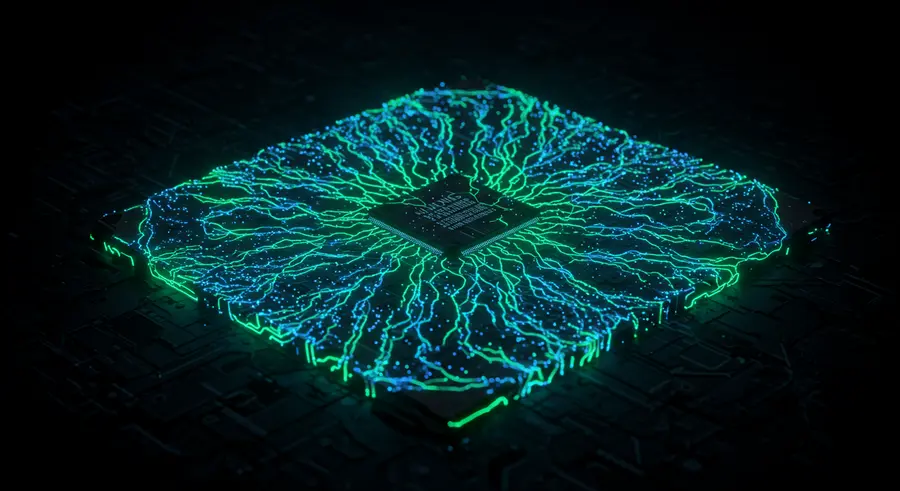Appearance

Welcome, tech enthusiasts and curious minds! 👋 Today, we're embarking on an extraordinary journey into one of the most fascinating and rapidly evolving fields in computer science: Neuromorphic Computing. Imagine a computer that thinks, learns, and processes information in a way that mirrors the human brain – efficient, adaptive, and incredibly powerful. That's the promise of neuromorphic computing, and it's poised to revolutionize artificial intelligence as we know it!
What Exactly is Neuromorphic Computing? 🤔
At its core, neuromorphic computing is an approach to designing hardware and software that mimics the neural and synaptic structures and functions of the human brain. Unlike traditional Von Neumann architectures, which separate processing (CPU) and memory (RAM), leading to the "Von Neumann bottleneck" (a constant back-and-forth of data), neuromorphic systems integrate these components.
Think of it this way:
- Traditional Computers: Data moves between a central processor and memory. It's like a chef (CPU) constantly running to the pantry (RAM) for ingredients.
- Neuromorphic Computers: Processing and memory are co-located. It's like the chef having all ingredients right on the cutting board – highly efficient and fast!
This brain-inspired design allows for:
- Highly Parallel Processing: Many computations happen simultaneously, just like billions of neurons firing in your brain.
- Event-Driven Computation: Neurons (or artificial neurons) only activate when there's an input or "spike," leading to incredible energy efficiency. Your brain doesn't consume energy constantly; it's active only when needed.
- In-Memory Computing: Data is processed where it's stored, drastically reducing the energy and time spent moving data around.
Why is it So Important? The Current AI Challenge ⚡
Modern AI, especially deep learning, relies heavily on massive datasets and powerful GPUs, consuming enormous amounts of energy. Training large language models, for instance, can be incredibly energy-intensive. This is where neuromorphic computing shines: it offers the potential for orders of magnitude greater energy efficiency while handling complex, real-time AI tasks.
How Does it Work? The Building Blocks 🏗️
Neuromorphic chips are built with artificial neurons and synapses that simulate their biological counterparts:
- Artificial Neurons: These are the processing units. They "fire" or send a signal (a "spike") when enough input signals accumulate, similar to biological neurons reaching a threshold.
- Artificial Synapses: These store information and connect neurons. They can strengthen or weaken their connections (weights) based on learning experiences, mimicking synaptic plasticity in the brain. This "learning" happens directly on the hardware!
A key element often used is Spiking Neural Networks (SNNs). Unlike traditional Artificial Neural Networks (ANNs) that use continuous values, SNNs communicate using discrete events (spikes), making them highly efficient for certain types of data, especially real-time sensory input.
Real-World Applications: Where Neuromorphic Computing is Making Waves 🌊
While still in active development, neuromorphic computing is already showing immense promise across various industries:
🤖 Robotics & Autonomous Systems:
- Real-time Perception: Robots can process sensory data (vision, audio, touch) instantly for navigation, object recognition, and interaction, making them more agile and responsive.
- Energy-Efficient Autonomy: Critical for drones, self-driving cars, and remote exploration vehicles where power is limited.
- Example: Imagine a drone that can navigate complex environments and identify obstacles in milliseconds, even with limited battery life, thanks to a neuromorphic chip processing its visual input.
💡 Edge AI & IoT Devices:
- On-Device Intelligence: Instead of sending all data to the cloud for processing, neuromorphic chips allow AI to run directly on small, low-power devices at the "edge" of the network.
- Enhanced Privacy & Reduced Latency: Data is processed locally, improving privacy and enabling instantaneous responses.
- Example: Smart sensors in a factory can monitor equipment for anomalies in real-time, identifying potential failures before they occur, without needing constant cloud connectivity.
🗣️ Speech & Image Recognition:
- Efficient Pattern Recognition: Ideal for tasks like voice commands, facial recognition, and anomaly detection in video feeds.
- Continuous Learning: Systems can adapt and learn new patterns on the fly.
- Example: A security camera powered by neuromorphic computing could identify suspicious behavior or unauthorized access much faster and more efficiently than current systems.
⚕️ Healthcare:
- Real-time Diagnostics: Analyzing medical images or patient data with unprecedented speed.
- Prosthetics & Brain-Computer Interfaces: More intuitive and responsive control of artificial limbs and direct interaction with neural signals.
🏭 Industrial Automation:
- Predictive Maintenance: Identifying subtle changes in machinery to predict failures before they happen, minimizing downtime.
- Quality Control: Real-time inspection of products on assembly lines with high accuracy.
Breakthroughs and Future Outlook 🚀
Leading tech companies and research institutions are heavily invested in this field:
- Intel's Loihi: Intel's neuromorphic research chip, Loihi, is a prime example. It features 130,000 neurons and 130 million synapses, designed for high efficiency in AI tasks like pattern recognition and optimization problems.
- IBM's TrueNorth: One of the pioneering neuromorphic chips, TrueNorth boasts 1 million neurons and 256 million synapses, demonstrating remarkable power efficiency for cognitive tasks.
- Emerging Materials: Researchers are exploring new materials like memristors to create more efficient and brain-like artificial synapses.
The road ahead involves scaling these systems, developing more sophisticated algorithms that can fully leverage the unique architecture, and integrating them seamlessly into practical applications. As our understanding of the brain continues to grow, so too will the capabilities of neuromorphic computing.
Learn More! 📖
This article provides just a glimpse into the exciting world of neuromorphic computing. For a deeper dive, check out our catalogue page on the topic: https://techlinkhub.xyz/catalogue/emerging-technologies/exploring-neuromorphic-computing
The future of AI is not just about bigger models, but smarter, more efficient architectures. Neuromorphic computing is leading the charge, bringing us closer to truly intelligent and autonomous systems that learn and adapt like never before. Stay curious, and keep building the future! ✨